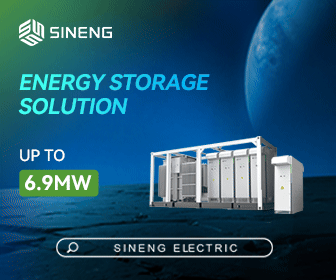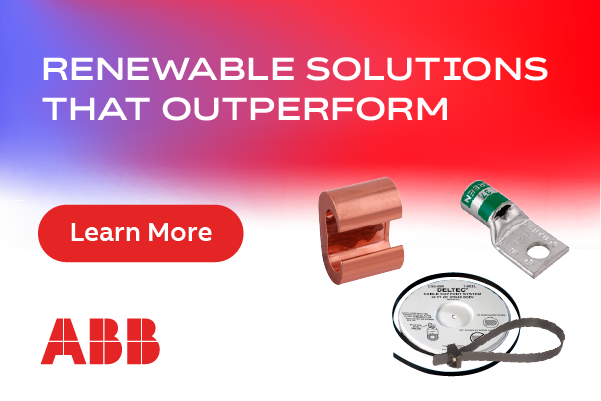Comparable Power
 The Solar Energy Industry Association (SEIA) expect utility-scale solar capacity to double over the next couple of years.As solar energy becomes more widely used, owners are looking for affordable energy storage technologies. Utility-scale battery storage systems hold promise to enable greater penetration of variable renewable energy into the grid by storing the excess generation and by firming the renewable energy output. Compared to other technologies, batteries provide a relatively inexpensive energy storage system that offers modularization, rapid and long-term response, flexible installation, and short construction cycles.
The Solar Energy Industry Association (SEIA) expect utility-scale solar capacity to double over the next couple of years.As solar energy becomes more widely used, owners are looking for affordable energy storage technologies. Utility-scale battery storage systems hold promise to enable greater penetration of variable renewable energy into the grid by storing the excess generation and by firming the renewable energy output. Compared to other technologies, batteries provide a relatively inexpensive energy storage system that offers modularization, rapid and long-term response, flexible installation, and short construction cycles.
Utility-Scale- Solar-Plus-Storage Battery Technology
Lithium-ion batteries
The most prevalent type of utility-scale solar-plus-storage technology is Lithium-ion batteries. The two types used most commonly are Lithium Manganese Oxide (LMR-NMC) and Lithium Iron Phosphate (LiFePO4). Lithium-Manganese-Cobalt-Oxide batteries currently dominate the utility-scale storage market, but Lithium-Iron-Phosphate batteries are on the rise.
Lithium Iron Phosphate batteries are named after the organic compound used as the cathode material, along with a graphitic Carbon electrode with a metallic backing as the anode. These offer a cost-effective solution for storage durations between 30 minutes and 4 hours, flexibility in design, range of voltages, power ratings, and energy requirements. Drawbacks include smaller cell voltage levels and more cells per system, resulting in more advanced string monitoring. Also, due to a shorter life span, they require frequent replacement.
Vanadium Redox (VRB) batteries
Vanadium Redox batteries are relatively new to the solar segment. They employ Vanadium ions in different oxidation states to store chemical potential energy. The VRB battery exploits the ability of Vanadium to exist in a solution in four different oxidation states, using this property to make a battery that has just one electroactive element instead of two.
While VRB technology has lots of advantages - they provide longer-term storage, deliver power up to 15 hours, offer greater flexibility and applicability, and can be recharged many times - these storage systems do not scale well; for expansions, a new system may need to be installed.
Zinc-Hybrid batteries
Zink-Hybrid batteries are a promising technology for utility-scale storage systems. In these batteries, a porous anode is formed by a mass of Zinc particles and then saturated with an electrolyte during discharge. Hydroxyl ions formed at the cathode by an Oxygen reaction move into the Zinc paste to create Zincate, releasing electrons that travel to the cathode.
They offer up to four-to-six hours discharge with flexibility to go to a higher power, as well as longer run-times and greater fire safety than other technologies.
Lead Acid Valve Regulated VRLA & Vented Lead Acid VLA Batteries
Lead Acid batteries offer a dependable and inexpensive solution, provide greater flexibility, and meet longer power demands than other technologies. Both VRLA and VLA batteries utilize a grid-like structure suspended in an acidic electrolyte solution.
VRLA batteries are sealed and include Absorbed Glass Matt and jellified electrolyte. While referred to as sealed, they do have a pressure relief valve for safety. They can be mounted in any orientation and require less maintenance than VLA batteries.
VRL batteries include lead-alloy substrates bathed in a reactive electrolyte solution. A vent allows the escape of evaporating electrolytes, which is a by-product of the reaction between Hydrogen and Oxygen. Consequently, they require regular replenishing of the suspension fluid and routine maintenance.

Nickel-Cadmium or -Iron Batteries
Nickel-Cadmium (NiCd) batteries stand up to extreme temperatures and deep discharge situations. Nichole Iron batteries (NiFE) are specifically considered for use in warmer climates, where low temperatures are not a problem and high discharge rates are rare due to regular charging by photovoltaic modules.
Ni-based battery cells usually consist of a Nickel Oxyhydroxide cathode, a separator between the electrodes, and an alkaline electrolyte (usually Potassium Hydroxide), whereas the anode consists of different minerals depending on the Nickel-based battery cell type.
NiFE batteries are robust, tolerant of abuse, have a wide operating temperature range, good charge properties, low maintenance requirements, and a long life even if under-maintained. However, they contain a toxic heavy metal element known for the "memory effect", low specific energy, poor charge retention, and high manufacturing cost.
Sodium-Sulfur Batteries
Sodium-sulfur batteries are a type of molten-salt battery constructed from liquid sodium and sulfur, composed of molten Sodium anodes, molten Sulfur cathodes, and Sodium+-conducting ceramic electrolytes.
Sodium-Sulfur batteries have a high energy density, high efficiency of charge/discharge, and long cycle life, and are fabricated from inexpensive materials, offering a cost-efficient option. A known drawback is that the connections within the sealed battery module can corrode. Issues usually require battery module replacement.
Battery Maintenance
While battery type and configuration vary by project, they all must comply with NERC, IEEE, and NFPA 70E maintenance standards. Replacement and recycling are also critical components of battery storage system management plans.
 Lithium-Ion, Zinc Hybrid, and Sodium-Sulfur Battery Maintenance
Lithium-Ion, Zinc Hybrid, and Sodium-Sulfur Battery Maintenance
Each of these battery technologies includes battery management systems (BMS) that monitor cells for temperature, state of charge, and cycle life. If there are unsafe conditions, the BMS can shut the system down, run tests, and report issues. No annual maintenance is needed, but ongoing review of detailed reports is required to identify issues and plan for their resolution.
Maintenance is required when cells degrade. For Lithium batteries, it is common practice to replace the battery module or add a new rack while leaving the degrading batteries in service. Because Lithium cells can experience thermal runaway, the BMS and a thermal management system are critical in monitoring battery cell health.
Vanadium Redox (VRB) Batteries Maintenance
VRB batteries are non-flammable but have high toxicity due to the Oxide of Vanadium. Minimally they need annual maintenance, including routine inspection, air filter replacement, refill of electrolyte fluids, and yearly capacity testing.
In principle, all components of the Vanadium Redox battery could be replaced many times. But in many cases, this would not be economically sensible, and replacement is the better option.
Lead Acid Battery Maintenance
For VLA and VRLA batteries, regular inspections are required. The measurements to be taken at each interval are specified in the standards. Gathering data on a more regular basis supports the ability to trend battery performance, which can help in predicting failure and extending battery service life.
The chemical nature of Lead-acid batteries means they will self-discharge over time even if not in use, so they will need a minimum recharge in order to maintain their functionality.
Nickel-Based Battery Maintenance
Nickel-base battery maintenance is similar to lead-acid battery maintenance, but it can operate in a much wider temperature range.
Energy Storage Future
The variety of battery storage technologies available today can make it challenging to choose what makes the most sense for your needs. Understanding different system designs requires an advanced level of expertise. Consulting with companies that specialize in DC and AC power energy storage engineering and maintenance is critical to ensure your solar-plus-storage system meets the short- and long-term goals for your organization.
 Brandon Schuler is Manager Industrial DC & Battery Operations for Electrical Reliability Services, an electrical engineering and testing company providing comprehensive testing, maintenance, and engineering services to a variety of industries including utilities, data centers, renewable energy, commercial and industrial industries.
Brandon Schuler is Manager Industrial DC & Battery Operations for Electrical Reliability Services, an electrical engineering and testing company providing comprehensive testing, maintenance, and engineering services to a variety of industries including utilities, data centers, renewable energy, commercial and industrial industries.
Electrical Reliability Services | ers.vertiv.com
Author: Brandon Schuler
Volume: 2021 July/August









